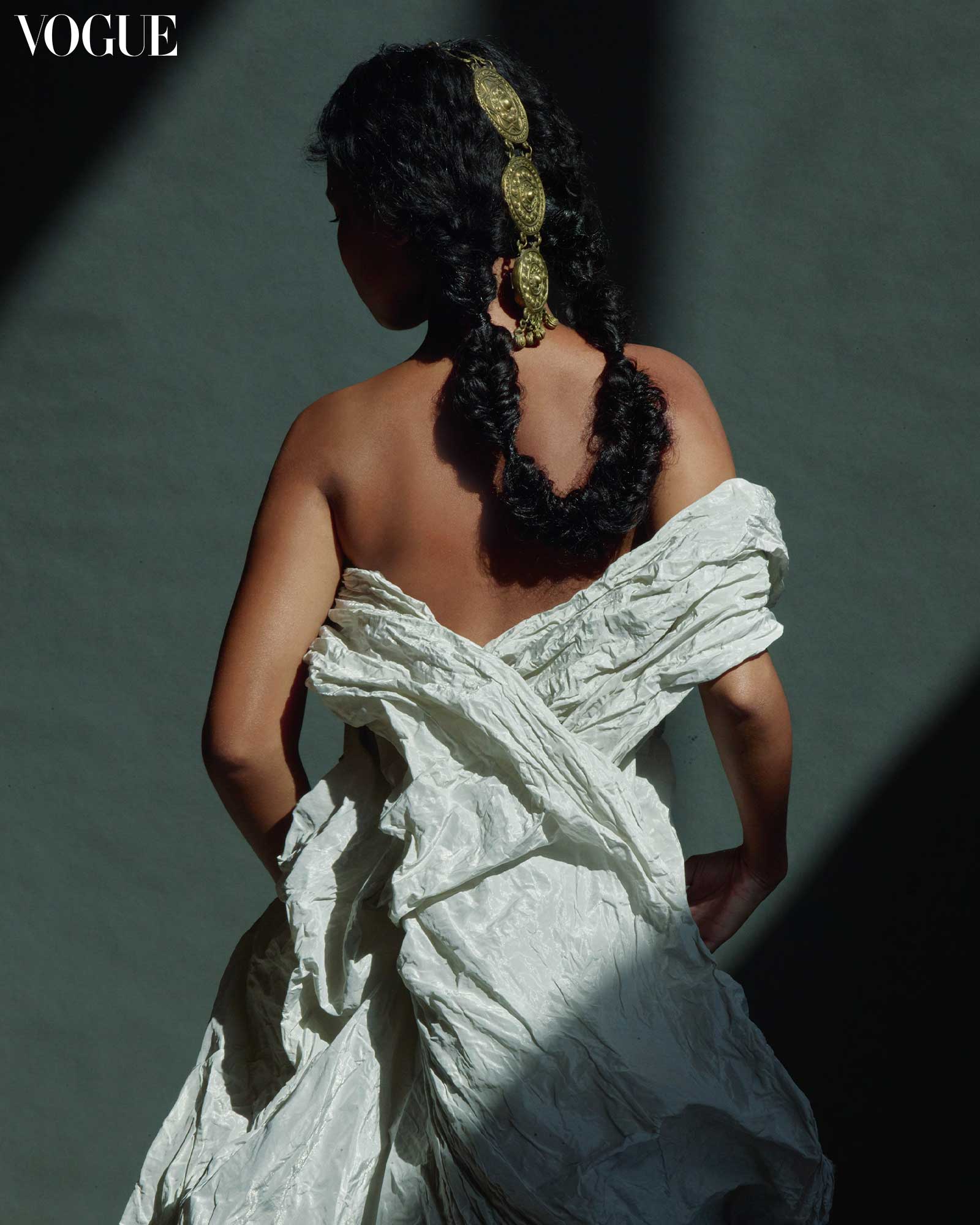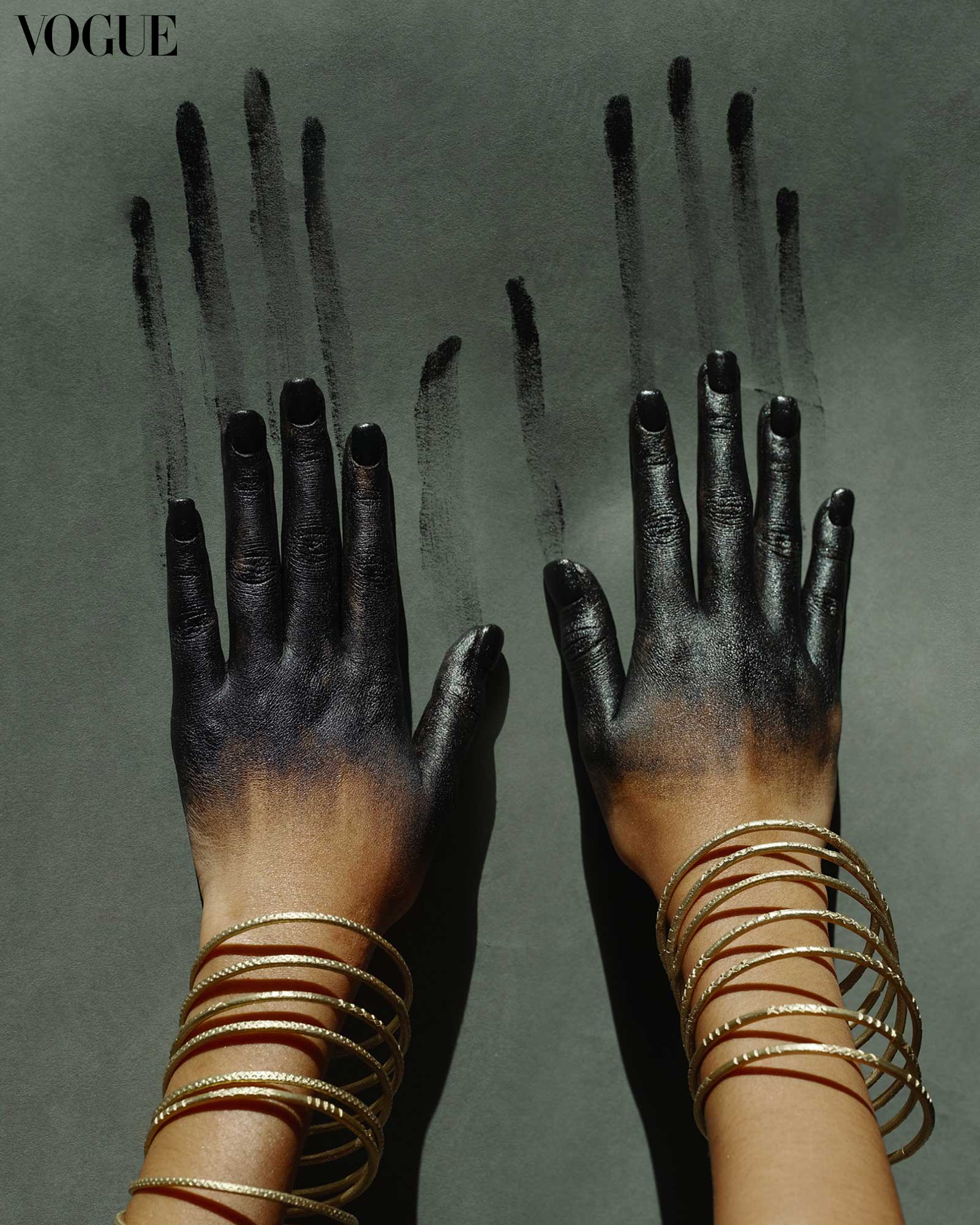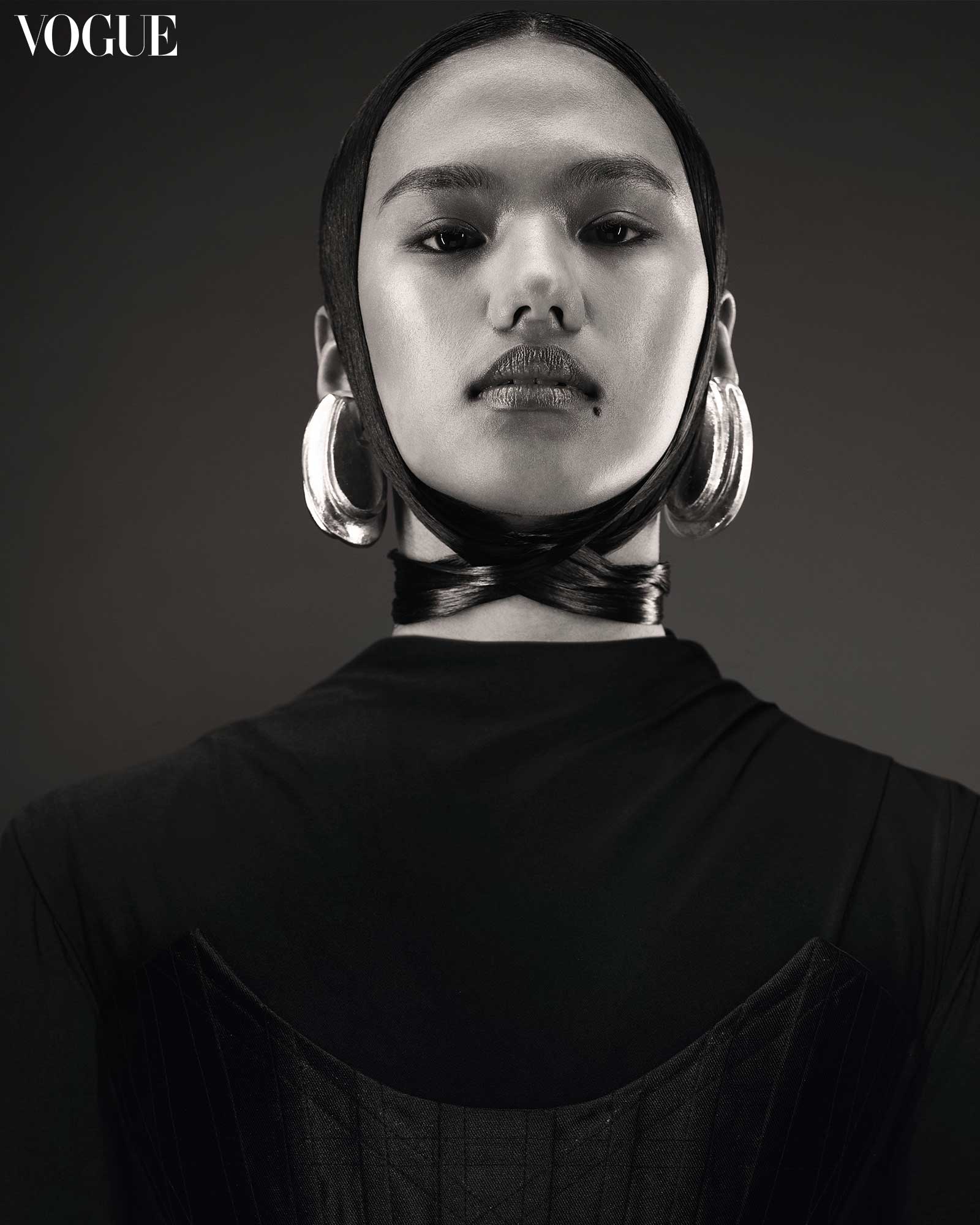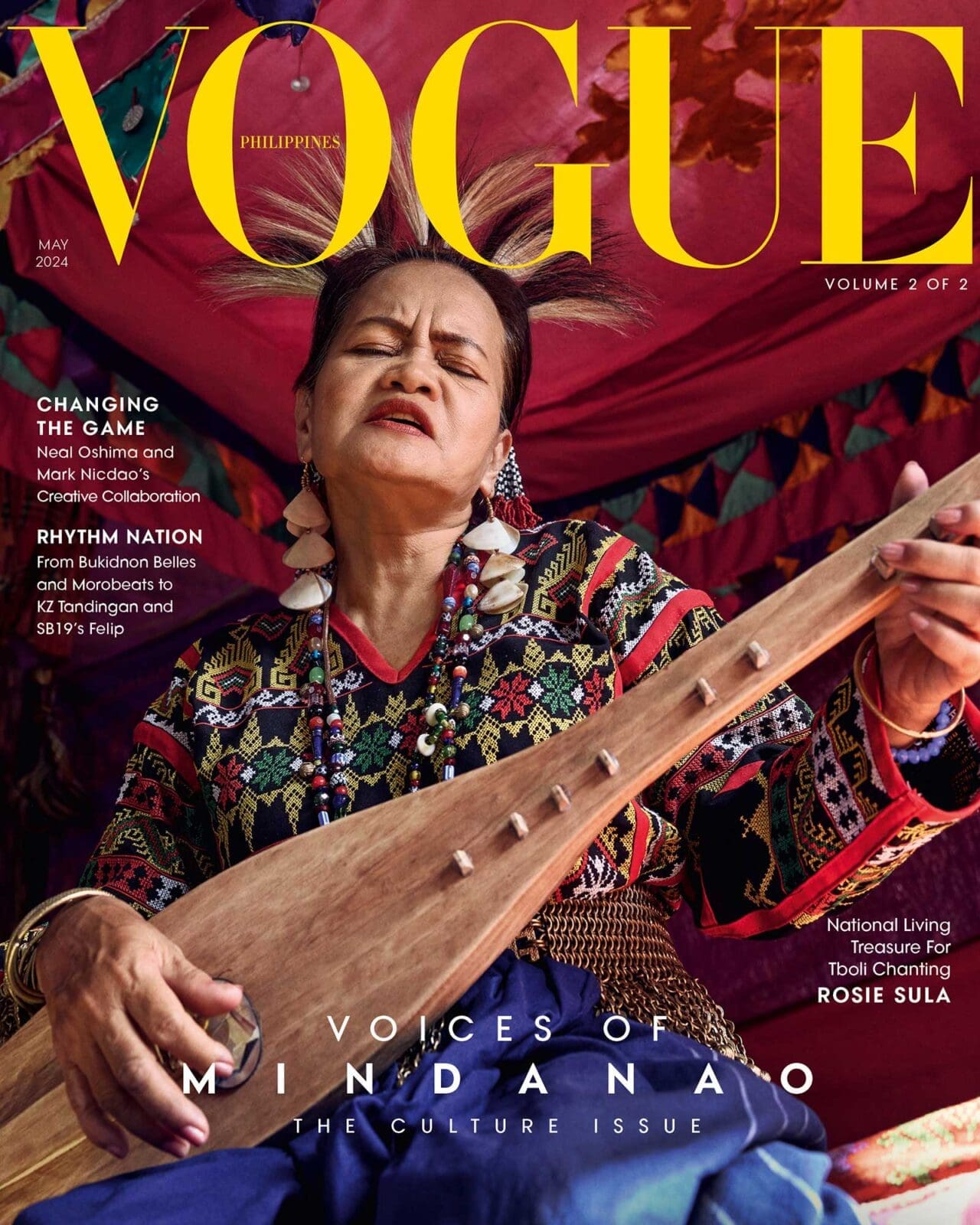GUCCI wool jacket and shorts, ARNEL PAPA gold wooden earrings. Photographed by Neal Oshima and Mark Nicdao for the May 2024 Issue of Vogue Philippines.
In a beauty editorial helmed by photographers Neal Oshima and Mark Nicdao, models from Vogue‘s casting call in Davao move in sync, creating vibrant, vital images of a modern Mindanaoan.
This story is the second part of “Capturing a Modern Mindanao,” which appeared in the pages of Vogue Philippines’ April 2024 issue, Volume 1 of a foray into Mindanao.
When Abdur Balono arrived at Vogue Philippines’ casting call at the Dusit D2 Davao Hotel, he kept a mantra: that this opportunity would either be a “hit or miss,” but he would walk away feeling grateful whatever the outcome.
Weeks later, he would doze off on a couch in the same hotel, and wake up to the clicks and shutters of cameras, just in time to start shooting the second layout of the Vogue Philippines beauty story lensed by Neal Oshima and Mark Nicdao. “When I woke up from that nap,” he recounts, “I got to my senses that all of it is really happening, that it feels so surreal to me.”


His work as a content creator fills his days, showcasing fantastical beauty looks and concepts to a following of upward of 150,000 on TikTok. Standing in as muse, one that represented the vibrancy of Mindanao, was something that he never really expected he would get to do. “‘Beginner’s luck’ is an understatement,” Abdur muses. “I used to think that I [would] forever be on the spectrum of ‘Always the artist, never the art.’” He continues, “I think it’s safe to say that, for once in my life, I finally got to be the art.”

On set that day, Abdur and fellow casting call models Alyannah “Yanna” Gutierrez, Criza Mae Gallardo, Pamela Myco Agustin, Romechelle “Rommy” Escrin, Krystahl Guina, and Kurt Vicencio were swept up in swaths of silk crepe, taffeta, and gauzy fabric, and decorated with gold, brass, and straw. Styled by David Milan and Vogue Philippines fashion director Pam Quiñones, sculptural volumes were meant to depict a sense of regality, something that felt necessary in translating traditional Mindanaoan dress for the modern eye.
“How do you take inspiration from a culture that is so colorful?” David poses. In any case, he says, this story was more about highlighting each of the models’ individuality. He and Quiñones stick to a palette of oatmeal and black to keep the focus on their beauty. “What I thought was, just really focusing on the features of each talent, not really taking away too much or distracting from their hair or their distinct features.”


In the first part of the story, Neal and Mark use light and color to create these half-shadowed, “ambiguous figures” that might stand in place of any and every Mindanaoan. “They’re not just statues there,” Mark said in an earlier interview. “It’s like a portrait, a painting.”
In the second half, the models basked in a different glow, under soft daylight. It was a visceral memory for Kurt, who remembers feeling the warmth of the sun on his skin. Nervous at first, he quickly felt at ease under the direction of the two photographers. “Everyone was kind, humble, and welcoming. And luckily, the weather was nice throughout that day,” he remembers. “Everything felt natural and comfortable eventually.”
Something that both Neal and Mark remember as a highlight of the shoot was the models’ professionalism. For most of them who marked their first time being on set, they moved with an ease that said otherwise. “They were sort of pretty relaxed,” Neal comments. “As you could expect from people that, maybe, didn’t have any expectations [coming into the shoot].”
“They were amazing,” Mark adds. “They’re very aware, and they’re very professional with their work. That was a very pleasant experience for me as well.”
Perhaps the story’s theme allowed them a certain amount of comfortability. “[The shoot] made me feel appreciated for who I am, where I come from, and what makes me unique,” Yanna says. “Being able to showcase that on such a platform was both fulfilling and meaningful for me being a Mindanaoan.”

For Pamela, she felt a weight she didn’t know she was carrying since she got the message from Vogue Philippines. “I felt a deep sense of responsibility and pride knowing that I was chosen from over 350 aspirants to showcase our heritage,” she says. “It was more than just a personal achievement. It was an opportunity to honor my family, friends, and fellow Mindanaoans.”

Rommy shared the same sentiment. “I cried [thinking] not only could I represent myself but my tribe also, the Manobo of Agusan del Sur,” she says. “First time kasi sa aming lugar na merong isang tao na mag represent sa aming tribe sa isang renowned na magazine [It’s the first time our tribe is being represented in a renowned magazine].” She adds on a personal note, “And I am so happy that one of my dreams came true—to be in a magazine!”
Abdur, on the other hand, felt that he wasn’t only representing Mindanao. “I take pride in being one of the representatives of Muslims who are on the LGBTQI spectrum because for the longest time, I’ve been seeking someone who [would] fight and represent my identity,” he explains. “I’ve never thought I’d be the one to do it now. I’ve never thought I’d feel so seen and valid.”
That day, the models found strength within themselves and in one another as they came together for a purpose that felt at once self-defining and collective. “I was happy and I was thankful that I met new people on the set. I will never forget that day, full of fun and laughter while watching everyone pose,” Criza says. “I have such an event in my life that I always remember with each passing day.”
Kurt found the experience humbling, as he represents the south in images that capture it in a new light. “I’m simply honored to be one of the pictures that paint beautiful Mindanao, alongside other great individuals,” he says. “It truly is an enchanting place, rich in stories and culture.”

For Krystahl, the experience felt larger than her. As she embraced her uniqueness on a global platform, she constantly thought back to her roots. “I was thinking that day about the efforts of my ancestors and the Talaandig-Manobo community for me to be present and ready on the shoot,” she says. “I felt seen. I felt that my heritage has been seen, that it deserves to be shared with the world.”

How do you draw inspiration from a culture that is so colorful? The answer to that, we found, is in celebrating our multiplicity, and then finding connection. “Take a closer look,” says beauty editor Joyce Oreña, “and you’ll discover that we are more alike than different.”
By CHELSEA SARABIA. Photographs by NEAL OSHIMA & MARK NICDAO. Styling by PAM QUIÑONES & DAVID MILAN. Beauty Editor: JOYCE OREÑA. Makeup: Colleen Ariel Sandoval. Hair: Ivan Lopez. Models: Alyannah Gutierrez, Pamela Agustin, Krystahl Guina, Romechelle Escrin, Criza Mae Gallardo, Kurt Vicencio. Art Director: Jann Pascua. Casting and Production: Anz Hizon, Bianca Zaragoza, Bianca Custodio. Nails: Lacquered by Wynonah. Beauty Writer: Bianca Custodio. Photographer’s Assistants: Arsan Holifeña, Jack Marion, Phil Nicdao. Stylist’s Assistants: Arthur Andrande, Assi Castañaga, Roland Boyles, Sittie Anwar. Makeup Assistant: June Paulene Buencamino. Hair Assistant: Reymark Montinola. Shot on location at DusitD2 Davao Hotel. Special thanks to AirAsia

